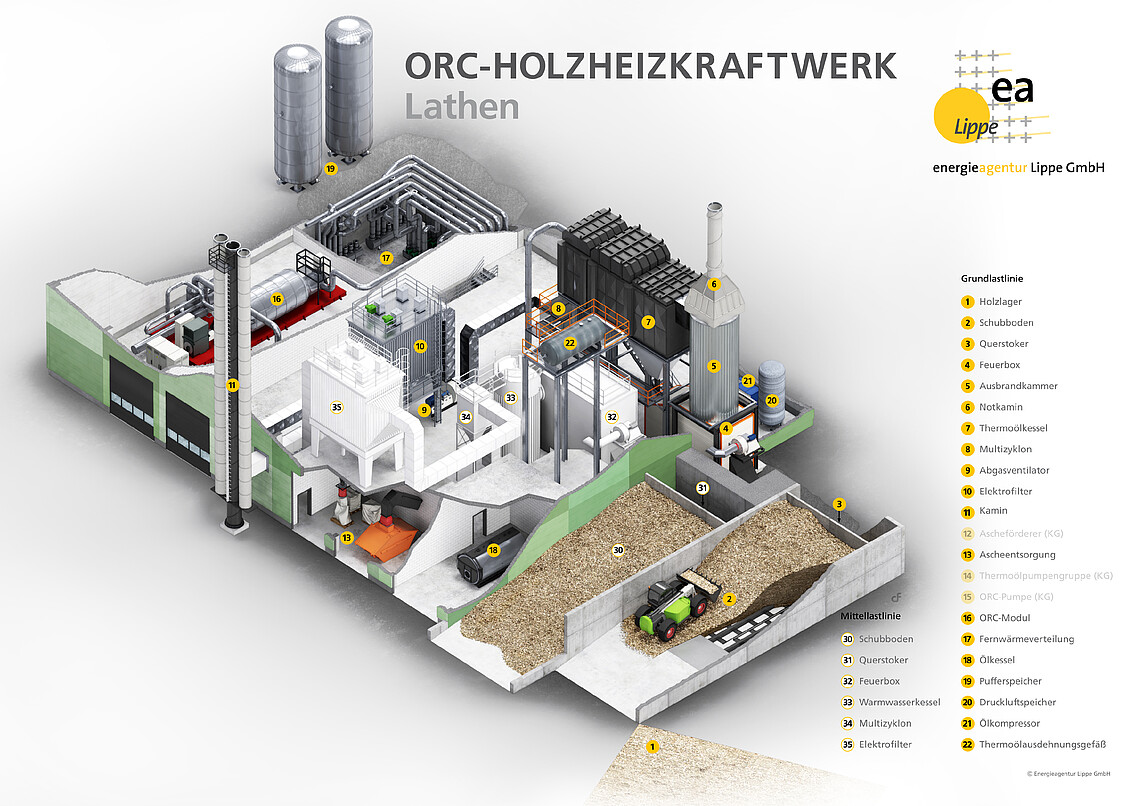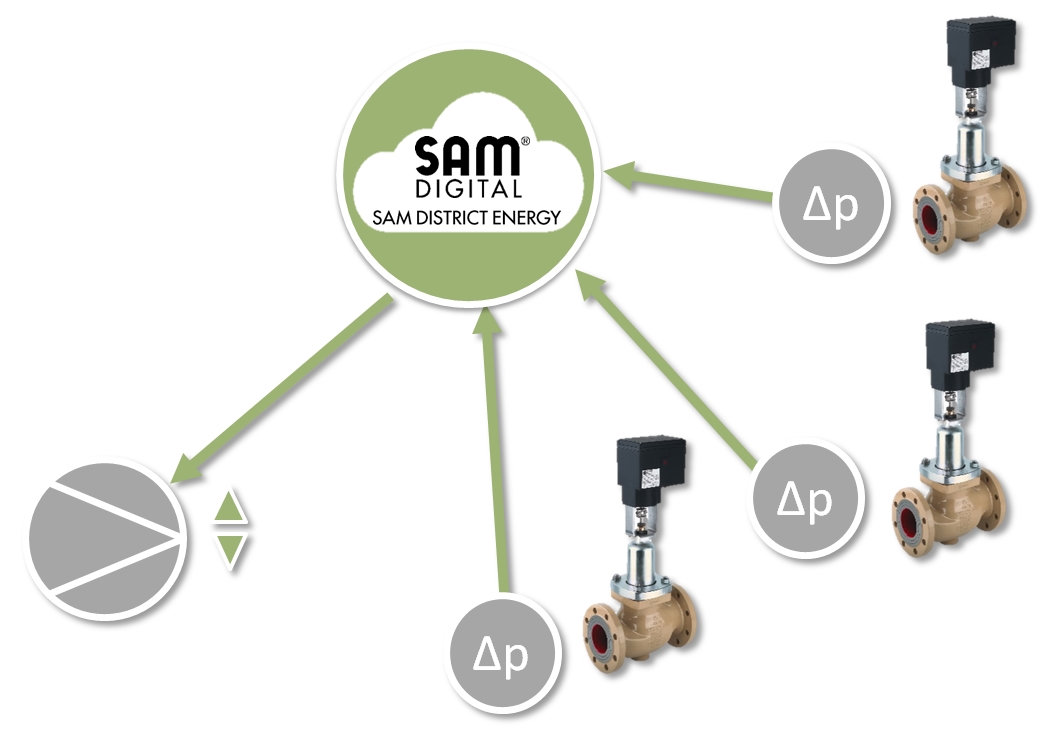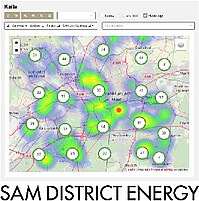Controlling the Hydraulic Worst Case from the Cloud

Example: local heat supply network operated by an energy supplier association (Energiegenossenschaft Emstal in Lathen, Germany)
Controlling the Hydraulic Worst Case
In addition to providing the right temperature, one other factor is important in local and district heating networks: the differential pressure must be sufficient to supply all customer installations. The better the supplied differential pressure matches the demand, the less energy is required to operate the network pumps. The differential pressure can be controlled either directly at the heat generator's network pump or at the stations installed in index runs where the pressure drop is highest (hydraulic worst case). An index run is the section in a pipeline where the differential pressure is near the lower hydraulic limit. Controlling this hydraulic worst case can be challenging since there may be several points of lowest pressure in a network, which may be located far away from where the pump is controlled. This is the case in many networks and causes considerable extra installation work.
Lathen, a community in northern Germany, expanded its existing local heat supply network, which is operated by the Energiegenossenschaft Emstal energy supplier association, to include control of the hydraulic worst case. This involved installation of the web-based SAM DISTRICT ENERGY asset management tool and SAM MOBILE gateways for mobile phone networks. The differential pressure at every station is measured by a sensor, which is connected directly to the SAM MOBILE gateway. The worst points in the network are not only those stations farthest away from the pump: depending on the hydraulic changes caused in the network by feeding and withdrawing, the worst points can also shift within the network.
Thanks to the SAM MOBILE gateways used together with the SAM DISTRICT ENERGY portal, implementation of the worst-case control function is easy, flexible and quick. The web portal makes it possible to simply add further functions and applications to the existing control features. Benefits of this solution include quick installation and implementation as well as a high level of IT security. In addition, measuring points can be distributed all across the entire network as desired. This means that no restrictions apply concerning their distance from the pump or their location within the network. There is no need for complicated, expensive custom IT installations since the existing cloud-computing infrastructure can be used while observing German IT security standards.
Benefits for plant operators

Thanks to the lower pump output, energy consumption can be reduced considerably without sacrificing any convenience for the consumers. Substantial savings are possible by managing the pump's power consumption. Further positive effects are produced by a lower risk of flow-induced noise and less stress on the components installed. Another benefit of the system is particularly important during the hot summer months: temperatures can also be monitored at transfer stations or route sections.
As a result, remote monitoring, logging, analysis and parameter setting are available for the differential pressure, temperatures, heat meters and district heating controllers. Additionally, system adaptations can be implemented easily, for example when the district heating network is expanded. On top, the recording of controller data makes it possible to predict run times and temperature gradients (temperature drops particularly at low load), which means that the temperature actually required for the network curve can be determined.
This might also interest you
Quick exhaust valves
Subsidiaries
Supervisory Board
Commitment
SAM DISTRICT ENERGY
Self-operated regulators
Pilot valve
Executive Board
MainChange
Seminars
Digitalization
Supply pressure regulators
SAM DIGITAL
SAM GUARD
Valves
Headquarters
Differential pressure meter
Sales offices
Media
Actuators
Conference
Automation systems
SAM TANK MANAGEMENT
SIL
Control valves
Volume boosters
Hydrogen
Service
Valve accessories
Careers
Vocational training
Hook-ups
Limit switch
FDI
Lock-up valve
Globe valves
Industry 4.0
Positioners
Automation
Solenoid valves
SAM LAN




